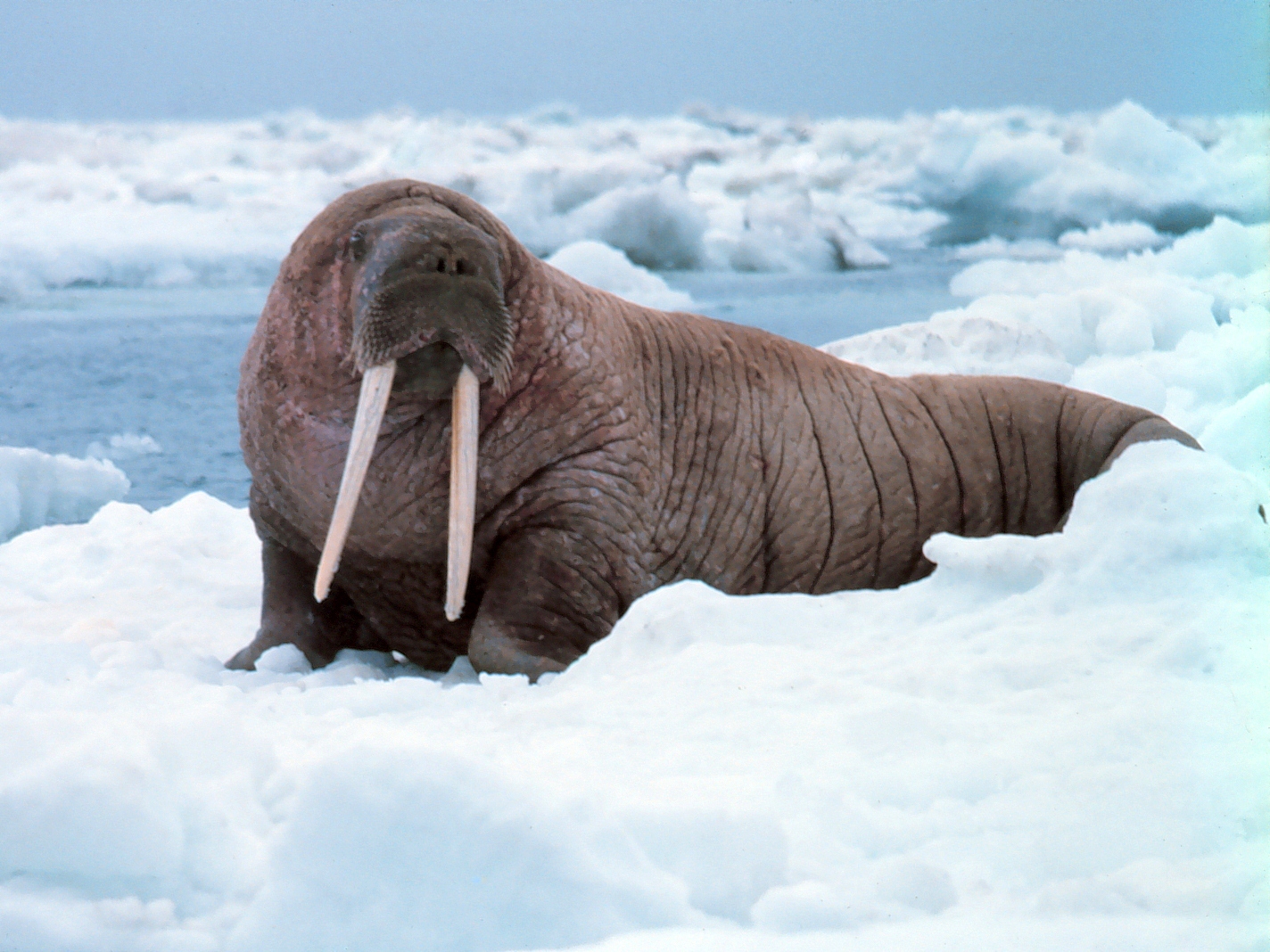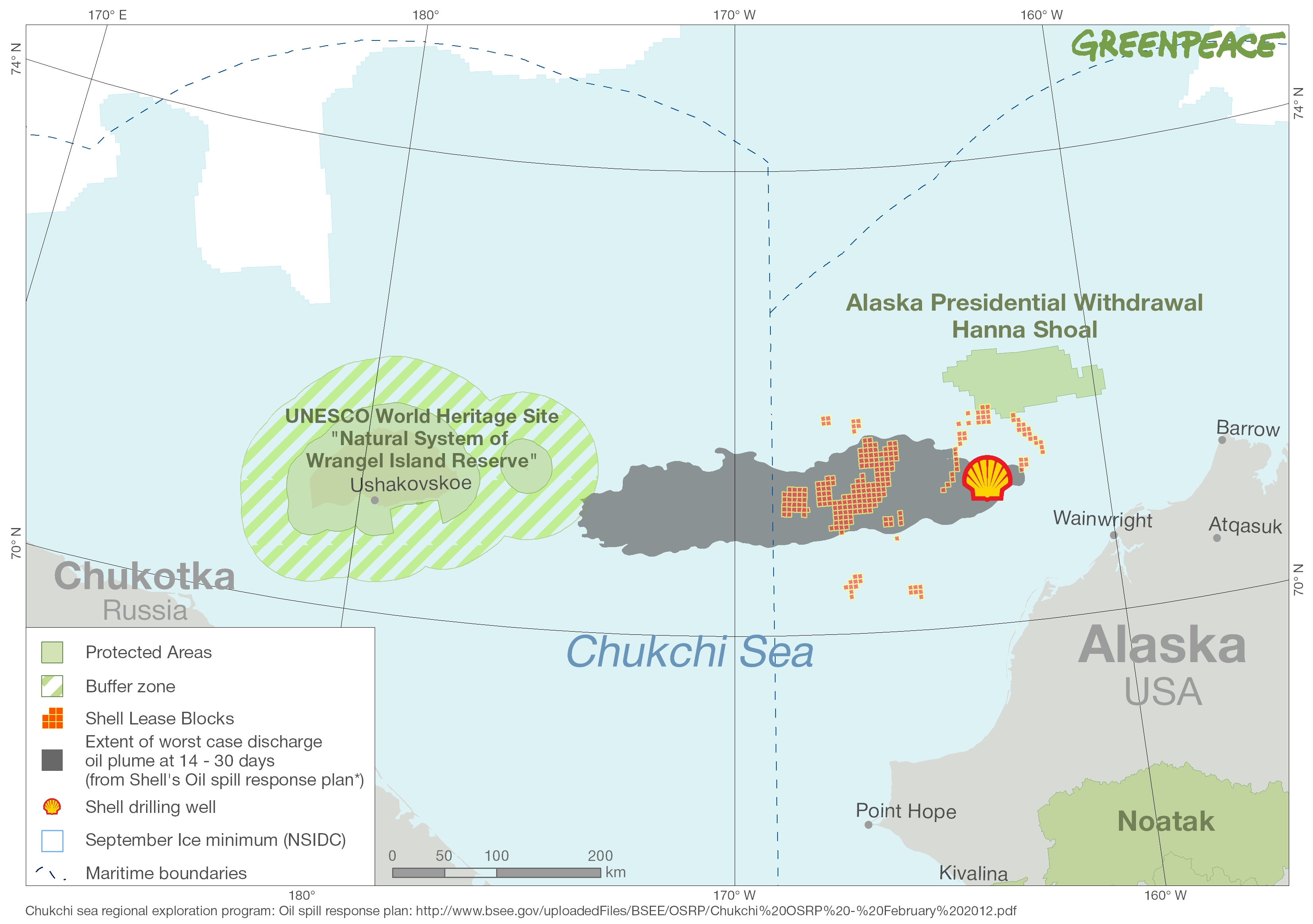Could regulations to protect walruses trip up Shell’s Arctic drilling plans?

Update 1 July: The Obama administration has ruled wildlife protections for walruses and polar bears bar Shell from drilling two wells simultaneously in the Chukchi Sea this summer. The firm will be able to move its two contracted rigs to the waters off the Alaskan coast, but only bore wells with one at any given time. This is because the wells are only 9 miles apart, not the 15 miles required.
A little known, but important, permitting rule, designed to protect walruses and other marine mammals from disturbance, may be the spanner in the works for oil giant Shell as they await approval for the final few permits needed to drill in the Arctic’s Chukchi Sea this summer.
The restrictions could see Shell barred from operating both of its Arctic drill rigs at the same time this summer, which environmental groups say will be situated too close together. This might cause delays as the issue is sorted out.
Shell’s fleet is already heading north to Alaska, even though the firm still needs to obtain two site-specific drilling permits and letters approving the “harassment” of land mammals including polar bears and walruses – Shell has already got their permit to harass thousands of whales and seals.
In a letter to the US Secretary of the Interior, a coalition of environmental groups – lead by law non-profit Earthjustice – pointed out that, under 2013 Fish and Wildlife Service regulations, drilling rigs are required to be placed no less than 15 miles apart.
Shell’s proposed drill sites have only nine miles distance between them, however, according to Shell’s own Arctic oil exploration plans.
This would violate the 15-mile requirement put in place to protect Pacific walruses and polar bears from noise harassment occurring during the drilling process, Earthjustice stressed, calling this a “fundamental flaw”.
The environmental groups claim “FWS [Fish and Wildlife Service] cannot issue the Letters of Authorisation to Shell because they would violate an explicit condition of the governing incidental take regulations”.
Shell spokesperson Curtis Smith told the Seattle Times that the company would continue to consult with regulators on the terms of the letter of authorization. He declined to comment on whether it would be possible to space the two wells more than 15 miles apart.
Exclusion zone protects walruses
Shell objected to the 15 mile exclusion zone in 2013. In response, the Fish and Wildlife Service affirmed that the zone “contributed to the protection of walruses and their continued availability to subsistence hunters.”
Such a zone ensures that there is a corridor for “walrus to transit without experiencing take caused from seismic or drill activities” and the biological benefits include reduced potential for hearing damage.
A critical walrus foraging ground known as Hanna Shoal is located adjacent to Shell’s drilling sites and tracking data has shown that walrus often pass through the sites during the drill season.

In Shell’s Exploration Plan, submitted in 2014, the firm aimed for simultaneous drilling operations using the Polar Pioneer and Noble Discoverer at specific drill sites
Alternative: drilling one rig at a time
A one drilling rig alternative – Shell’s back-up provision – is not an option, the letter argues.
The groups note that such a plan was not considered by the Interior Department regulators when they evaluated the environmental impacts of Shell’s broad exploratory plan for the Chukchi Sea earlier this year.
“The Bureau of Ocean Energy Management (BOEM) refused even to analyze a one drilling rig alternative in its environmental assessment, in part because the resulting prolongation of exploration drilling out over more years would lead to greater overall adverse environmental effects,” the letter states.
Shell’s two-well plan was approved on the condition that Shell obtains the necessary permits required to continue its Arctic mission.
What does this mean for Shell?
At this stage, the impact of this development is uncertain – if the environmental groups’ concerns are upheld it’s possible that the exploration plan approval may have to be amended, allowing Shell to drill with only one rig. It is uncertain how long that process might take, if further public comment would be required, or if it would be upheld by the courts.
It’s also possible that Shell may go to Congress seeking a change to the relevant Marine Mammal Protection Act, leading to further challenge and criticism from environmental groups.
Either way the technicality will likely lead to delays.
Read more:
- How Shell’s Arctic drilling will ‘harass’ thousands of whales & seals – with potentially harmful impacts
- Energy Files: US government conceals concerns about Shell’s Arctic spill response system
- Comment: Shell fights to prevent the release of Arctic drilling audit

